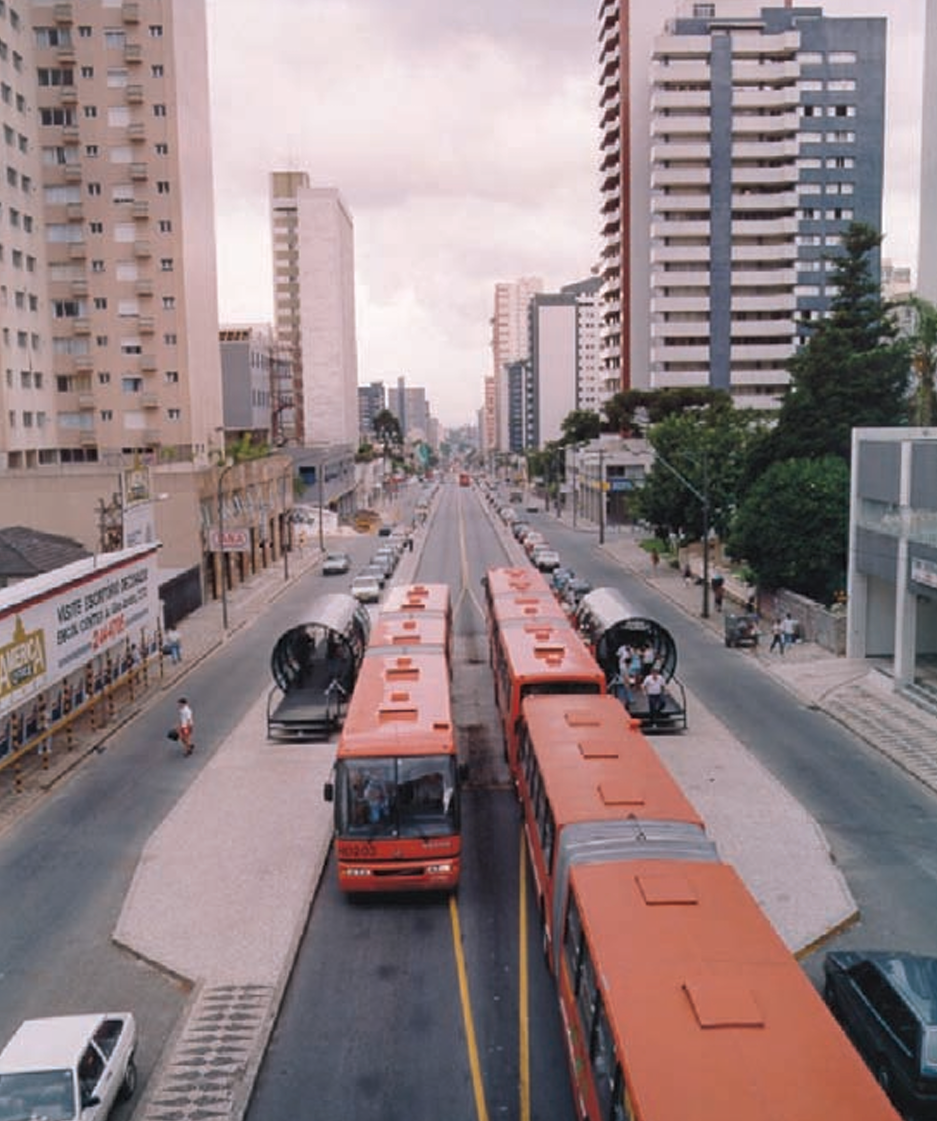
Spatial development can be an effective tool to increase a sense of place and physical activity, improve air quality and accessibility, increase social cohesion and promote well-being among residents in urban areas. Urban mobility and spatial development need to be planned comprehensively and in parallel. Spatial development can contribute to improved urban mobility through changes in density, land use mix and connectivity. Integrating spatial development with urban mobility transit corridors has been undertaken successfully in Curitiba, Brazil. Diverse and mixed land uses can reduce travel distances and enable walking and other active modes of transport to access goods and services. By influencing the spatial location and density of development in the urban environment, urban mobility planning can contribute to reducing vehicle kilometres travelled resulting in less congestion, pollution and emissions.
The Mayor's Transport Strategy for Greater London provides an
example of how to achieve this.
Spatial Development Measures are grouped under the following topics:
n
Corridor Development Strategies
Corridor Development Strategies (CDS) guide future development along mass transit corridors based on Transit-Oriented Development (TOD) principles to encourage suitable land-use mixes and higher densities of residential and commercial developments, and to promote the creation of attractive and livable places around stations. This approach was initiated in Curitiba where urban development has been guided by high-capacity transit corridors, known as ‘structural axes’ which has proved to be most successful and a model for many cities throughout the world. High-Capacity Transit Corridors often have many major stations or transfer points that serve as anchors for higher-density mixed-use development with a pattern of walkable districts or neighborhoods connected to commercial, employment, institutional and recreation areas.
n
Pedestrian-Oriented Design (POD)
Pedestrian Oriented Design (POD) provides clear, comfortable pedestrian access through interconnected, traffic-calmed streets along with compact and mixed-use spatial development. This is achieved by promoting pedestrian oriented buildings, amenities, landscaping, walkways, and activities that support liveable neighbourhoods, promote crime prevention along with personal and community safety.
n
Asphalt Art
Asphalt Art (also known as Tactical Urbanism, DIY Urbanism, Planning-by-Doing, Pop-Up Placemaking, Urban Acupuncture, or Urban Prototyping) is a citizen-led approach to neighborhood building using short-term, low-cost, and scalable interventions to catalyze long-term change. Asphalt Art is used to test designs, ideas, and changes to improve community connection, safety, health, equity, accessibility, and happiness. Asphalt Art projects use low-cost materials to test and gather input on potential street design changes. They encourage residents, non-profits, local businesses, and government agencies to work together to address problems related to user experience.
n
Transit Oriented Development (TOD)
Transit-oriented development, commonly known as TOD, is a planning and design strategy that focuses on creating urban development patterns which facilitate the use of public transit, walking and cycling, as primary modes of transport and which supports vibrant, diverse and livable communities. This is achieved by concentrating urban densities, communities and activities within a 5-10 minute walking distance from rapid transit stations (both bus and rail-based), developing quality urban space and providing convenient and efficient access to a diverse mix of land uses. TOD brings together elements of land use and transport planning, urban design, urban regeneration, real estate development, financing, land value capture, and infrastructure implementation to achieve more sustainable urban development. TOD aims to increase walking and cycling and public transport ridership as well as reducing travel times and costs.





